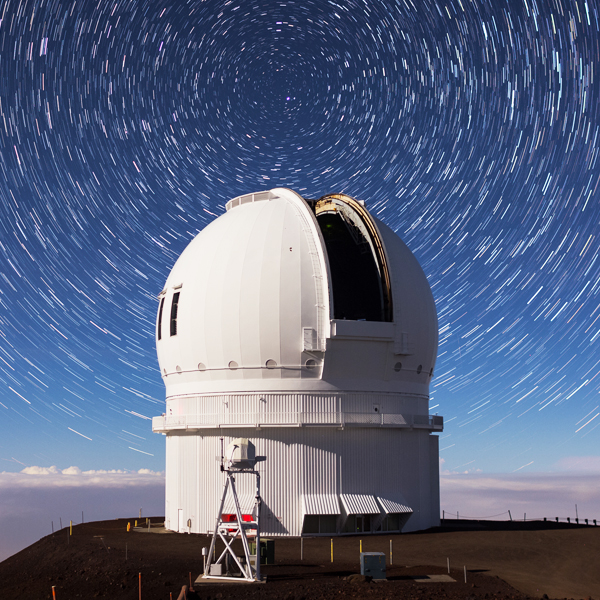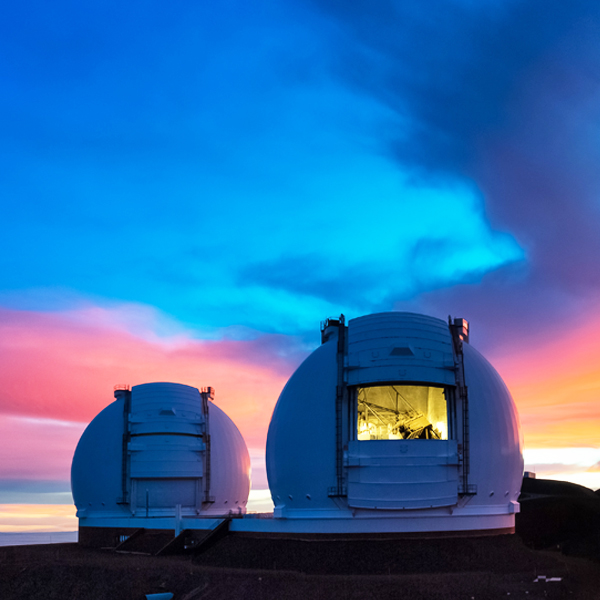Researchers Discover Dim Satellite Orbiting the Milky Way
- Interim Director of Communications, MCS
- 412-268-9982
An international team of scientists, including a researcher at Carnegie Mellon University’s McWilliams Center for Cosmology and Astrophysics, has discovered the faintest satellite yet orbiting the Milky Way.
The object, named Ursa Major 3/UNIONS 1 or UMa3/U1 for short, consists of dozens of stars that are more than 10 billion years old. Spread over a volume of only 10 light years across, it is minute compared to the Milky Way, which contains over 10 billion stars and measures a hundred thousand light years across.
The team discovered UMa3/U1 using data obtained from the Ultraviolet Near-Infrared Optical Northern Survey (UNIONS) at the Canada-France-Hawaii telescope with follow-up data from the W. M. Keck Observatory.
“Being able to detect such a tiny system, with only about 60 stars, speaks for the quality of the UNIONS dataset,” said Simon Smith, a doctoral student at the University of Victoria and lead author on the paper published in the January 2024 edition of The Astrophysical Journal. “It is either the faintest ancient star cluster known to date, or the faintest and closest known dwarf galaxy ever discovered.”
The latter scenario is the most exciting, since the presence of faint, ancient, dark matter-dominated satellites is a cornerstone prediction of Lambda Cold Dark Matter (LCDM), the leading theory for the origin of structure in the Universe. LCDM predicts that galaxies like the Milky Way have accreted hundreds of satellites during their formation and assembly. Confirming the presence of dark matter in UMa3/U1 is therefore critical for determining its origin.
“Estimating the dark matter content of a dwarf galaxy requires accurate and repeated measurements of its stellar velocities,” said Raphaël Errani, a McWilliams Center postdoctoral researcher and part of the team that reported UMa3/U1’s discovery. “Remarkably, the spectroscopic measurements obtained with the Keck II telescope are tentatively consistent with those predicted by LCDM.”
Canada-France-Hawaii Telescope

The Keck Observatory

Direct confirmation of UMa3/U1’s dark matter content requires detailed velocity measurements of its stars taken over time, which are not yet available. But the presence of dark matter is highly likely, according to Errani. This is because UMa3/U1’s orbit takes it through the inner regions of the Milky Way, where gravitational “tidal” forces are strongest. Without the binding presence of large amounts of dark matter, UMa3/U1 would not be able to survive on its current orbit for even a small fraction of its lifetime.
“Without dark matter, it is not obvious how UMa3/U1 could have been able to survive unscathed for billions of years,” Errani said.
Errani has been studying UMa3/U1’s stability using theoretical models. His findings, which support the idea that the system is stabilized by the presence of large amounts of dark matter, were published in the Astrophysical Journal.
“Raphaël’s work goes a long way toward establishing that this object is indeed a galaxy that consists almost entirely of dark matter,” said Matthew Walker, associate professor of physics at Carnegie Mellon, who studies the astrophysical properties of dark matter. “If follow-up observations confirm that expectation, then our very notion of what constitutes a ‘galaxy’ will need to stretch to include nearly invisible systems that contain only about a dozen stars.”
Julio Navarro, the Lansdowne Professor of Science at the University of Victoria who was involved with the study, said this is a momentous discovery and is fully consistent with a long-standing prediction of the “cold dark matter” theory.
“With a dark-to-luminous mass ratio of seven-thousand-to-one, this may not only be the faintest galaxy known, but also one of the most dark-matter-dominated. Its unique properties are very challenging to reproduce in any other scenario,” he said.
Researchers from Yale University, NRC Herzberg Astronomy and Astrophysics, the University of Paris, the Strasbourg Observatory, University of Hawaii, University of Waterloo, Perimeter Institute and Max-Planck Institute also were involved in the study.
